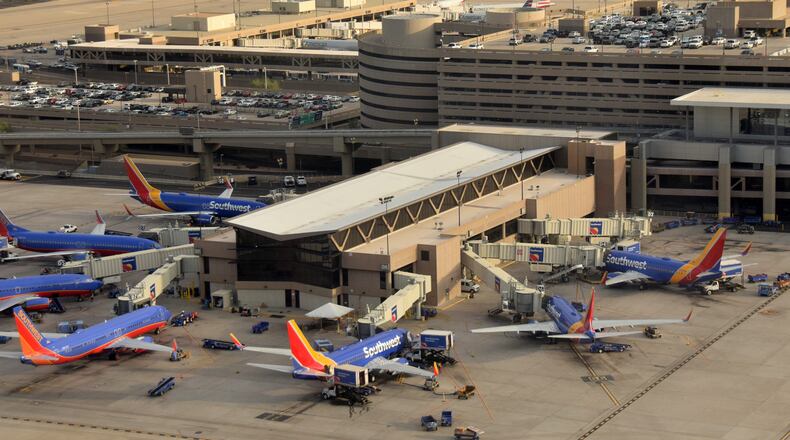More people are traveling in the U.S. than ever before, but that hasn’t been enough to boost airlines’ financial fortunes, as they’ve struggled to increase fares enough to keep up with surging fuel costs.
That conundrum has made for seven months of turbulence for shares of the five of largest U.S. airlines, which are down 13 percent since the start of the year, according to the S&P Airlines Index.
Now, investors are looking to see how airline executives will respond to the challenging financial environment, with American and Southwest report their second-quarter earnings and provide an update on the months ahead.
The updates will come after an up-and-down earnings season for the rest of the airline industry that has seen United Airlines post a better-than-expected outlook while JetBlue reported a loss of $120 million.
Here’s what to know about fuel, fares and other trends impacting the bottom lines of the two North Texas carriers:
Fuel burn
After several years of sky-high profits on the back of cheaper jet fuel, airlines have spent the last year dealing with rapidly-increasing gas prices that will collectively add billions of dollars to their operating costs this year.
American said it expects to pay between an average of $2.24 to $2.29 per gallon of fuel in the second quarter, up from the maximum of $2.23 it forecast earlier this year and a nearly 40 percent increase from the $1.62 it paid during the same period a year ago.
Southwest hasn’t broken out its fuel cost projections specifically for this quarter, but it’s expected to feel the pinch along with the rest of the airline industry.
“We knew going in that fuel is going to be the big headwind. They can’t hide from it,” said George Ferguson, senior airlines analyst at Bloomberg. “The big question is are they going to find enough fare increase to cover that higher price of fuel.”
Pushing fares higher
Airline executives have insisted that fares will have to go up to cover the rising costs of fuel, but so far, significant increases have failed to materialize.
Ferguson said competition among airlines, especially from fast-growing discount carriers, has made it difficult for major carriers to get a price increase to stick.
Earlier this month, American told investors its unit revenue — a closely watched metric of pricing power that represents the amount airlines earn per seat flown a mile — would be lower than anticipated, up at most 3 percent year-over-year compared to a prior forecast of as much as 3.5 percent.
Southwest’s outlook is even gloomier, with the carrier forecasting a 3 percent dip in its unit revenues compared to last year, driven in part by slower bookings following a fatal accident aboard one of its aircraft in April.
“Going into American and Southwest (earnings), I expect more of the same. American already warned a bit — we know they’re not going to be able to compensate for the higher fuel prices,” Ferguson said.
Throttling back growth
With fuel prices rising and fares largely stagnant, investors will be looking to see whether airlines take action elsewhere to bolster their financial performance over the rest of 2018.
While airlines are looking at ways to hold down non-fuel costs, the most-likely tool in the short term will be to scale back their plans for network growth, reducing the number of seats available in the market in hopes of pushing fares upwards. Both United and Delta told investors during their earnings reports they plan to grow slightly less this year than previously anticipated.
“The sea change I keep looking for is who’s going to come out and cut capacity in a real way so we can get this market closer to good supply-demand balance,” Ferguson said. “Looking at where fares are going, we’re not seeing the cuts we need to see to feel better about fare development.”
Southwest has already said it will grow less in 2018 than previously expected, expanding its supply of available seats by about 4 percent, compared to its previous target of 5 percent.
American hasn’t specifically indicated whether it will cut back its planned capacity growth for the year.
———
About the Author
Keep Reading
The Latest
Featured


